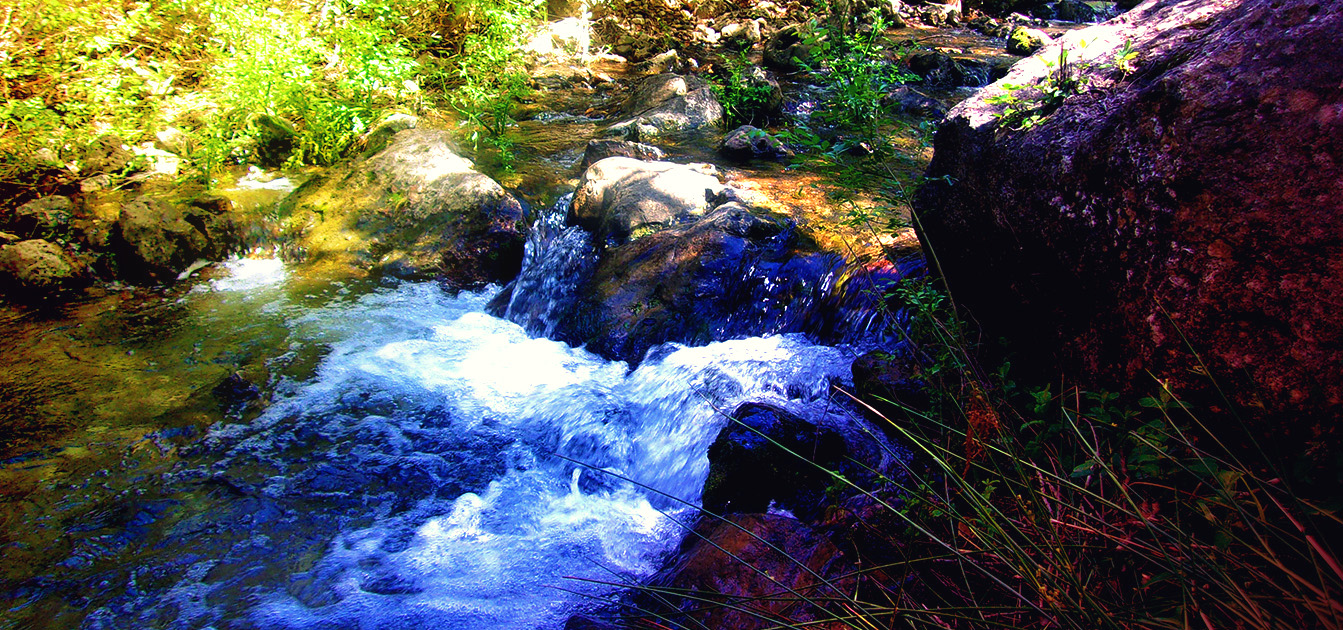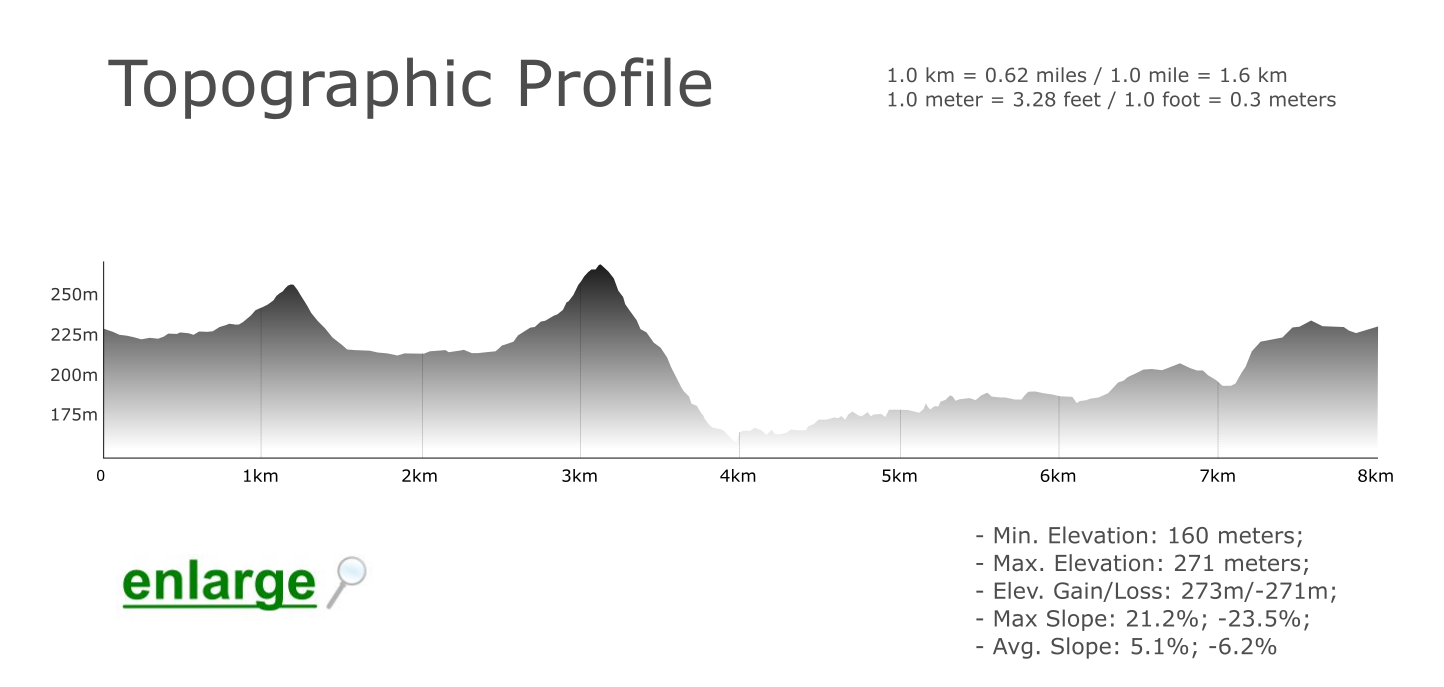
TRAIL FACTSHEET
Location: Amendoeira – Querença | Loulé Municipality; GPS Coordinates (decimal degrees): 37.173949 N, -7.963912 W; Grade: Medium difficulty; Type: loop trail; signposted trails; paved roads and dirt tracks; water streams; Lenght: 8000 meters/ 4.97 miles; Average Completion Time: 2.5 – 3.0 hours; Best Time to Visit: Spring; the best time to see notable botanic species is between January and April; Activities: Nature walks / hiking; birdwatching;
But do not be distracted by the elusive boars: these animals are quite shy and they tend to completely avoid humans; instead, try to visit this peaceful place between late February and early March. Heralding a warm and colorful spring, that’s the time of the year when almond trees are blooming in all their glory. In fact, just as the name of the trail implies, ‘Amendoeira’ is the Portuguese name for ‘almond tree’.
The walking trail starts at the village of Amendoeira proper, on the M523 road that runs northeast of Loulé. Starting off 120 meters southeast of Café Mateus, you’ll make your way through a narrow path in between dry orchards and dry stone walls. The path then intersects a sleepy paved road called Rua do Carvalhal before swerving abruptly to the northeast; this inflection point is conspicuously framed by two large stones on either side of the trail. Here, you’ll enter fields populated by fig, carob, olive, orange, and almond trees. The undergrowth is composed by dwarf palms, abundant thyme and rosemary, as well as by honeysuckle, lavender, and mastic trees. Look out for species like Rabbit, Partridge, Serin, Waxbill, Goldfinch, Hoopoe, and Azure-winged Magpie.
 Walkers can also search for migrant species like the Bee-eater and the beautiful Golden Oriole between April and September. The walking trail then starts its slow ascent towards a viewing point called Alcaria do Gato, a place where you can enjoy sweeping vistas of the undulating Barrocal. From this point onwards, the trail starts its descent into the lovely Mercês valley. There is a watermill called Ti Casinha slightly to the west from the place where the trail inflects to the right; now an ethnographic museum, this watermill was founded by the Arabs during the 8th century. Remarkably, it still works even today (albeit only for demonstrative purposes). There, on a noteworthy threshing floor, visitors will find a well and a pole – called ‘shadouf’ in Arabic – which was used to pump water.
Walkers can also search for migrant species like the Bee-eater and the beautiful Golden Oriole between April and September. The walking trail then starts its slow ascent towards a viewing point called Alcaria do Gato, a place where you can enjoy sweeping vistas of the undulating Barrocal. From this point onwards, the trail starts its descent into the lovely Mercês valley. There is a watermill called Ti Casinha slightly to the west from the place where the trail inflects to the right; now an ethnographic museum, this watermill was founded by the Arabs during the 8th century. Remarkably, it still works even today (albeit only for demonstrative purposes). There, on a noteworthy threshing floor, visitors will find a well and a pole – called ‘shadouf’ in Arabic – which was used to pump water.
You’ll hear the soothing sound of the water stream running down below on the left-hand side of the valley; on the opposite side, perched on the slope, you’ll see majestic cork oaks with their entourage of holly oaks, thyme, lavender, and laurestine. Spring brings with it striking flowers like the tassel hyacinth, the Portuguese squill, and the wild gladiolus. There’s also a staggering diversity of orchids, but such diversity is not paralleled by its relative abundance: being so, visitors must be especially thorough in order to spot these tiny beauties. Flying around the flowers you may detect spectacular butterflies like the Marsh Fritillary (an endangered species), the Swallowtail, and the Spanish Festoon.
As testified by the minute vineyards and lush vegetable gardens, this small valley is a place where natural fertility still abounds. Leaving the valley, the trail swerves first to the right and then to the left towards Fonte Filipe, a place where you can rest on the benches beneath the trees. Following the paved road, you’ll then cross a small bridge on the way up to a hamlet called Almarjão. Turning right, you will traverse the stream once again, this time by stepping on a few large stones. Bring appropriate footwear or simply remove your shoes to make it across, but do not attempt this crossing if the water level is too high: one foot of fast-running water is enough to sweep a person off the track. The rocky surface can also be slippery when wetted.
On its final section, the trail follows a centuries-old track paved with oddly-shaped limestone rocks. This stretch is a fitting reminder of the strenuous work performed by the countless generations of farmers that moulded this fruitful but very craggy landscape. Before reaching your destination at Amendoeira, take some extra time to appreciate the imposing, ancient carob trees along the trail. Then make your way to the nearby city of Loulé and to the renowned Pastelaria Amendoal – located at the city’s central roundabout – and ask for the traditional carob cake (‘tarte de alfarroba’) to appreciate the reason why carobs are such a treasured part of the Algarvian gastronomy. Enjoy!
